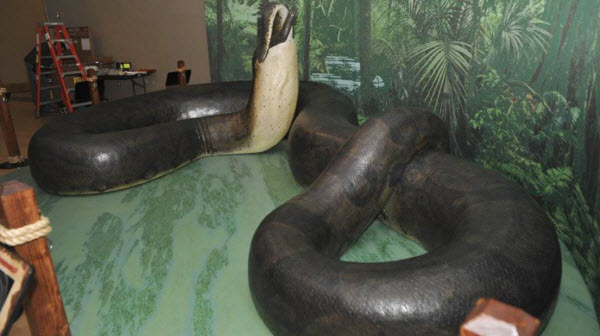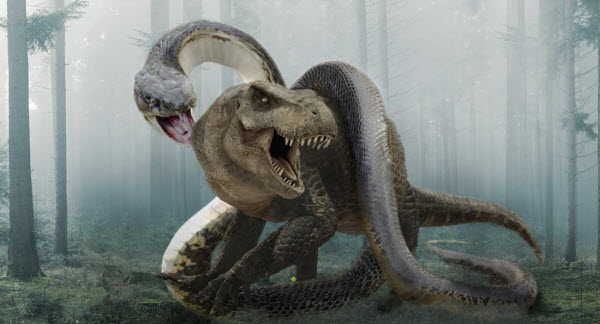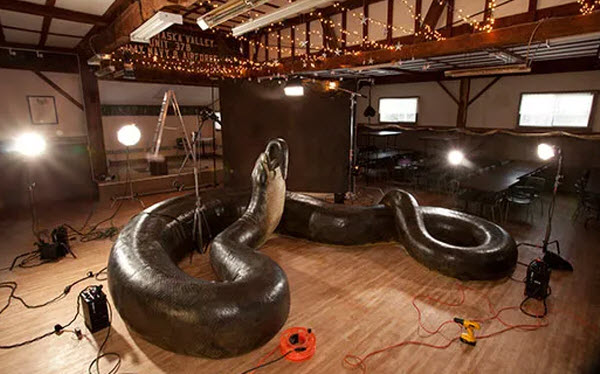The Smithsonian National Museum of Natural History in Washington has recreated the largest snake in the world, the Titanoboa, with an impressive life-size replica. This beast, measuring fourteen meters in length and weighing over a ton, lived 58 million years ago in the tropical forests of what is now La Guajira department in Colombia.
According to its discoverers, the beast’s weight is equivalent to that of ten wrestlers and its length to that of a school bus in the United States, where everything is built on a grand scale. “It is the largest snake that ever existed, from the boa family, living in lakes and killing its victims by strangling them and swallowing them whole,” says Carlos Jaramillo, one of the research coordinators and a Colombian based in the United States.

Experts say that Titanoboa was at the top of the food chain: it ate everything, including crocodiles and anacondas, suggesting that it might have even fed on humans had they shared the same era.
The prehistoric animal resembled a boa constrictor, but on a gigantic scale, and behaved like an anaconda, but in a more sinister manner, according to research that concluded a few months ago.
It all began — as in explorer stories — with an unexpected find under the sun and humidity of Colombia. “I had just gotten off the bus, found a rock, lifted it, and saw a fossilized leaf,” recalls Colombian Fabiany Herrera, then an undergraduate student. It was 2002. That visit to Cerrejón, the largest open-pit coal mine in the world, would turn that northern part of Colombia into the largest fossil repository on the planet.

Researcher Jaramillo sensed at the time that this was just the beginning, and subsequent explorations confirmed that the area had once been home to an exceptional tropical rainforest. Fossil by fossil, they realized that Cerrejón had housed flowers, fruits, plants, giant turtles, as well as fifteen-meter-long crocodiles and incredibly large lungfish.
In 2005, another Colombian student, Edwin Cadena, joined the expeditions to search for turtle remains and, in his first campaign, found some vertebrae. Cadena recalls finding “something different from what he was looking for and very large,” but filled with sediments, which his colleagues in Florida (USA) would later identify as “Titanoboa vertebrae,” due to their gigantic size and being from the boa family.

60 Monsters in the Jungle Research on the reptile, coordinated for five years by the Smithsonian Tropical Research Institute and the Florida Museum of Natural History, has found remains indicating that around sixty Titanoboas lived in the area. It also revealed that the rainforest where Titanoboa lived was wetter, with higher carbon dioxide levels and several degrees warmer than today’s, challenging the belief that more heat means less species diversity.
Wayne Clough, Secretary of the Smithsonian in Washington, said that the discovery of such novel traits is the best opportunity to bring science to the public. The exhibit, which opens today, explores the wildest side of nature, with photos of contemporary animals leading visitors to the replica of the gigantic prehistoric snake.

Aware of the exceptional nature of this recent discovery, the museum will also premiere a two-hour documentary on Sunday that recreates the life and environment of this record-breaking reptile that lived in what is now La Guajira department in Colombia. The film will air on the museum’s television channel and embraces the spectacular nature of this reptile: it is titled “Titanoboa: The Serpent Monster.”
